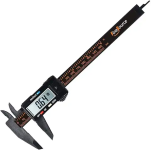I've been meaning to post a drawing with sizes.. Now I've gone down the rabbit hole of learning how to use Fusion 360 to create those diagrams. Overkill, for sure for this purpose, but I like learning new things.
I also had the crazy idea of using Delrin to make these fittings. Cheap (I think, but maybe not if I can source some cheaper steel?), light, easy to source, easy to machine. I also went down the rabbit hole of reading about the mechanical properties of various materials. I already knew that Delrin not nearly as strong as steel, and now I know things like its shear modulus is an order or 2 of magnitude less than steel - but maybe it is strong enough for this purpose. Crazy, right?
@Brian P and @GreyGhost You're right about my diameters. I think it's more like 1-1/4" in the widest aspect of the fittings - should save me some costs.
Also - I found out why I was having trouble cutting the brass. Something is wrong with the cross slide so as soon as it encountered even a tiny bit of pressure it would refuse to move much. I need to figure out what the problem might be, but fortunately I had another Sherline lathe that didn't have the problem so I just jumped to that.
So many rabbit holes! Every project I undertake is like that - I wonder what that says about me.
My opinions:
Brass can be weird to drill and turn. It tends to grab the cutter and needs a different rake on the cutter.
Those mini lathes have a tendency to let chips jam the feed rack and pinion. I'm working a deflector brush to minimize the situation on mine.
Plastic (Delrin) is harder to find and not cheap compared to more common materials. It's great for bearings but there's a reason they don't make car chassis out of it. Sometimes when the materials and time are on hand, I unnecessarily make things out of polished brass and stainless so they look pretty.
A lot of time I make a part out of mild steel (simple, strong and cheap) then I hit it with gun blue and a wipe of oil. It wouldn't work for a marine environment but your call.
I knew a guy building a 35 foot sailboat and he needed a sink for the galley. A standard $50 bar sink would have worked but they are 304 so he paid a sink company in Midland $400 to punch one out in 316. Then he changed the layout of the galley and it didn't fit.

















